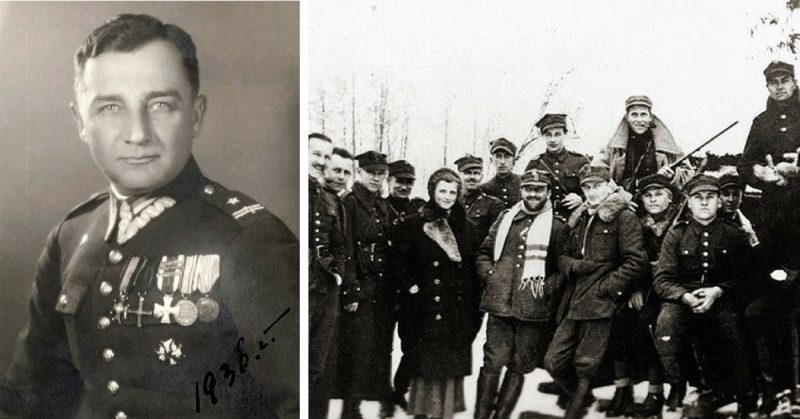When, in 1939, Germany and USSR conquered Poland, Polish soldiers found themselves in a dire situation. They had to choose whether to give up all hope or keep fighting. One of the men who faced such a choice was Major Henryk Dobrzański – the first partisan of WW2.
Beginnings
Henryk Dobrzański was born in 1897 to a Polish noble family. Young Henryk was brought up in a very patriotic atmosphere. Many of his family members took part in various Polish uprisings of the 19th century; some of them even fought under Napoleon. It is little wonder that he followed in their footsteps.
In 1915, Dobrzański joined the Riflemen’s Association – a Polish paramilitary organization that operated in Austria-Hungary. The lessons he received there soon proved to be very precious. On 28 of June 1914, Gavrilo Princip killed Archduke Franz Ferdinand. A month later WW1 broke out. Soon after that, 17-years old Dobrzański joined the Polish Legions (part of the Austro-Hungarian Army).
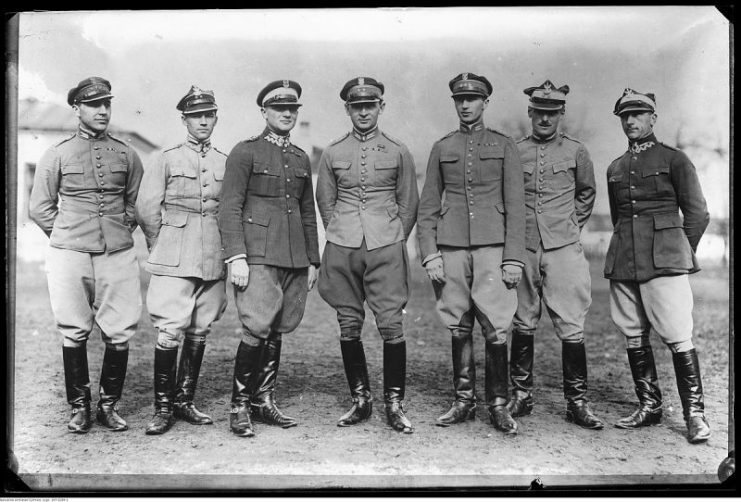
Henryk Dobrzański was assigned to a cavalry unit that fought on the Eastern Front. He soon proved to be a very skillful soldier. After WW1, he joined the newly created Polish Army and was given the rank of corporal.
From 1918 to 1921 he fought against Makhno’s Ukrainian anarchists and then against the Soviets. It is during this period that he earned his reputation. His commander, Major Rudolf Rupp, described him as a “brave,” “unconventional,” and “extremely dedicated young man,” who is “ready to die for his commander.” Dobrzański was undoubtedly a great cavalryman.
He knew how to use the mobility of cavalry to encircle and destroy enemy units. During the Polish war for independence (1918-1921), he was awarded the Virtuti Militari (the highest Polish military decoration) and four times the Cross of Valour. When the war ended, he was promoted to First Lieutenant.
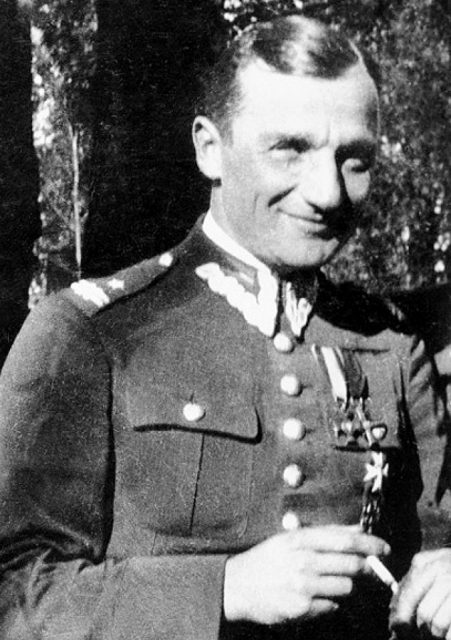
After the war, he continued on in the military, but he soon grew tired of peaceful life so he decided to pursue a sports career. He started to take part in equestrian competitions while still a member of Polish military. During his career, he took part in 11 international competitions winning gold six times. He even took part in the 1928 Summer Olympics in Amsterdam.
1939 Defensive War
When Germany invaded Poland in 1939, Dobrzański – who was now a major – was assigned to the 110th Cavalry Regiment as a deputy commander. The “110” was a part of the reserve Operational Group “Wołkowysk,” which was given the task of defending Vilnius (Wilno). But, on 17th September, the USSR treacherously attacked Poland. In this situation, the commander of OG “Wołkowysk” ordered his soldiers to cross the Lithuanian border and then try to join others in the Polish Army in France.
Almost all units obeyed this order – all but one. The “110” – mainly due to Dobrzański – decided to fight its way toward Warsaw, which was already encircled by Germans. After a few days of wandering through enemy territory, survivors of the “110” arrived in Krubki – just 12 miles from Warsaw. There they found that Warsaw had already capitulated a day earlier, on the 29th of September.
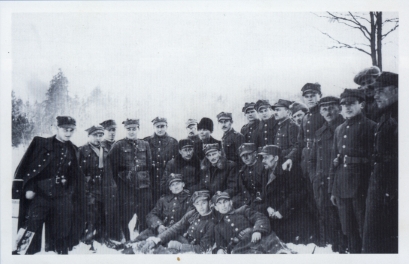
Separated Unit of the Polish Army
On that day, many soldiers of the “110” lost all hope and decided to go home, but Major Dobrzański was not one of them. He convinced 50 men from his unit to travel south to Hungary and then evacuate to France. From that day, Dobrzański and his soldiers were on their own.
During their long march, they kept off main roads. However, they didn’t avoid fighting Germans. On the 1st of October, Dobrzański’s unit annihilated a German convoy that was stuck in a muddy road. A few days, later they destroyed another German unit which they met in a nearby village.
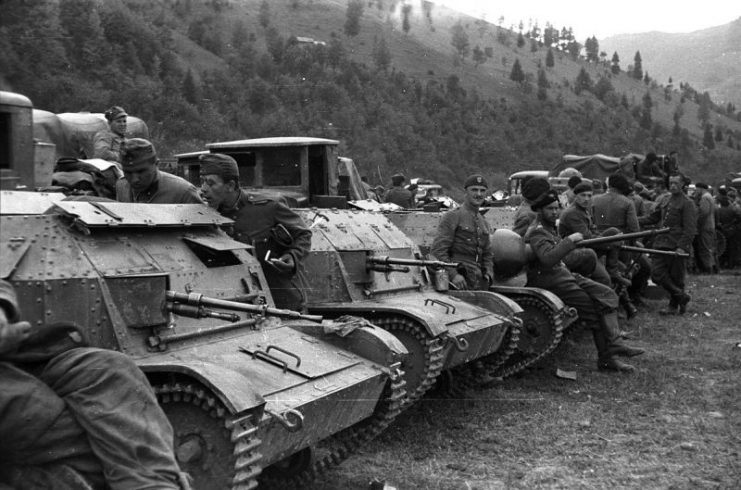
Finally, after many days of wandering, the Polish soldiers reached the Świętokrzyskie Mountains (Holy Cross Mountains). Only 11 men made it. Others died during skirmishes or decided to return home. Those who made it to the Mountains received a very warm welcome.
The locals supplied them with food, clothes etc. Additionally, local residents provided Dobrzański with information about enemy movements. At this point, Dobrzański gave up his original plan to reach Hungary. Instead, he decided to stay in Poland to conduct guerrilla warfare.
Dobrzański, like many other Poles, believed that the German occupation was just temporary. They believed that in the spring of 1940 the Allies would launch an offensive that would crush the Germans. Dobrzański wanted to stay in Poland and train as many recruits as he could. When the Allies launched their offensive, Dobrzański and his recruits would simultaneously start an uprising in Poland.
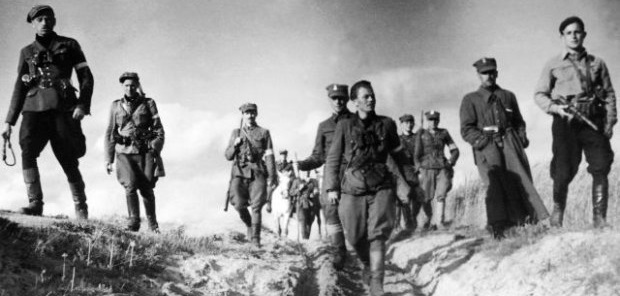
In mid-October, Dobrzański started using the name “Hubal” as his pseudonym. He also named his unit the “Separated Unit of the Polish Army.” The unit had its own seal and soon started to issue its own “statements.” The unit also started to create sleeper cells and train new recruits. Stories about Hubal’s unit soon reached the SZP’s headquarters.
SZP stood for Służba Zwycięstwu Polski (Service for Poland’s Victory). It was the first Polish resistance organization of WW2. It was created on the 27th of September 1939 in besieged Warsaw. General Michał “Doktor” Karaszewicz-Tokarzewski became the first commander of the SZP.
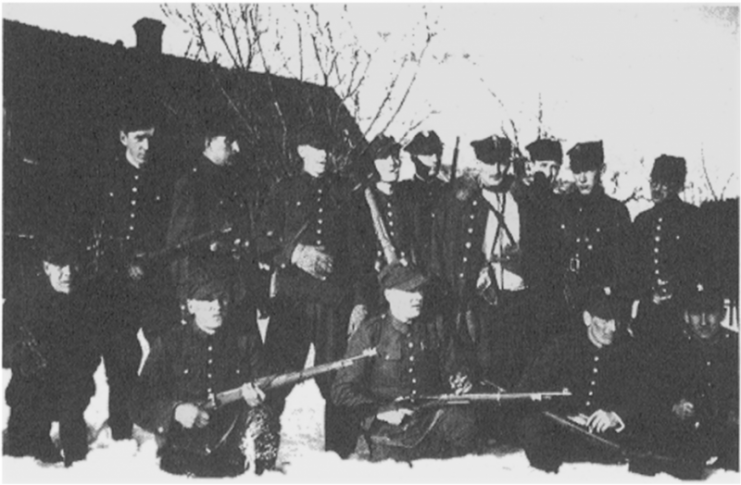
In November 1939, Karaszewicz-Tokarzewski called on Hubal to meet him in Warsaw. Hubal followed that order and came to Warsaw under an assumed name. During this meeting, SZP’s chief praised Hubal for his struggle and ordered him to stay in the Świętokrzyskie Mountains and keep on training new recruits.
He was also ordered to avoid fighting till the upcoming Allied offensive. During the rest of 1939, Hubal’s unit stayed in the Mountains and worked hard on training and planning future operations.
Meanwhile, the Germans knew that there was a Polish unit somewhere in the Świętokrzyskie Mountains, but they didn’t know its exact location. For now, they decided not to intervene. The Germans’ decision was in large part due to the harsh winter (the winter of 1940 was one of the coldest winters in Polish history, with the temperature falling below -40 °C) and their unfamiliarity with the area.
Additionally, there was an ongoing power struggle between General Johannes Blaskowitz, head of Oberkommando Ost, the commander of the military occupation and Hans Frank, head of Generalgouvernement, the civil occupation authority.
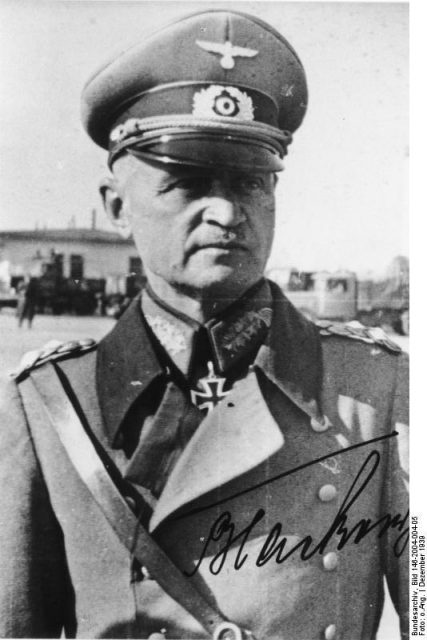
When winter ended, Hubal’s unit was already 300 men strong. All of them received extensive military training. Many of them were experienced soldiers who had fought in 1939. Moreover, some of them were officers before the war.
Their camp looked more like a regular army’s garrison than a guerrilla camp. They wore prewar military uniforms, had their own stables, etc. Their camp was heavily guarded. An area of about 20 square miles was constantly patrolled by Polish cavalry.
On 13th March 1940, the unit was visited by Lieutenant Colonel Leopold “Niedźwiadek” Okulicki – a senior member of the Union of Armed Struggle (ZWZ). The ZWZ was the successor to the SZP. General Stefan “Grot” Rowecki became the new head of the ZWZ. Rowecki viewed Hubal as more of a troublemaker than a hero.
When Okulicki arrived in the camp, he ordered Hubal to disband the unit. Hubal was furious and said that he wouldn’t “take off his uniform until after the war.” However, he let his men decide whether they wanted to stay with him or if they wanted to leave. As a result, only 100 soldiers stayed in the camp. Moreover, from now on the ZWZ viewed Hubal’s actions as lawless. Rowecki as head of the ZWZ wanted to capture Hubal and bring him to trial.
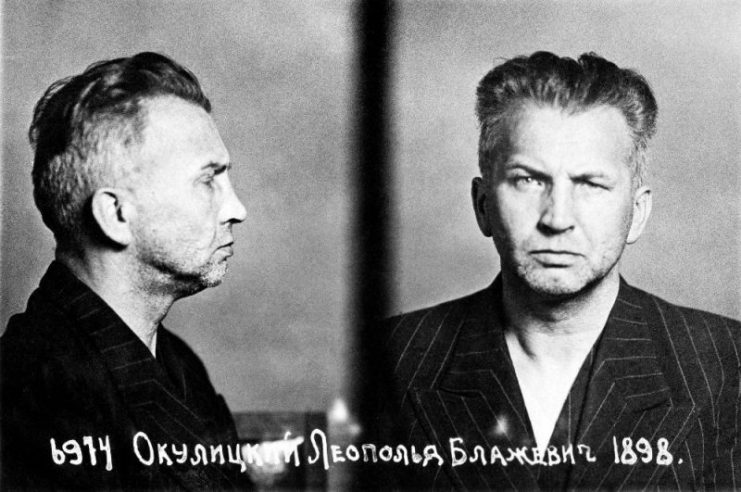
The Hunt
Meanwhile, the snow melted and Germans decided to hunt down Hubal’s unit and kill “Der Tolle Major” (The Crazy Major), as they called him, and his men. This operation was to be conducted by 3 SS regiments and 3 police battalions – in total it involved about 5000 men.
By the end of March 1940, the Germans started to encircle Hubal’s unit, which was now stationed near the village of Hucisko. On 30th March, at dawn, a Polish patrol spotted a German column moving toward the Polish campsite. In order to delay the enemy advance and gain more time for Hubal to organize a defense, the Polish soldiers attacked the Germans. The fight was extremely intense, but the soon outnumbered Poles were forced to retreat.
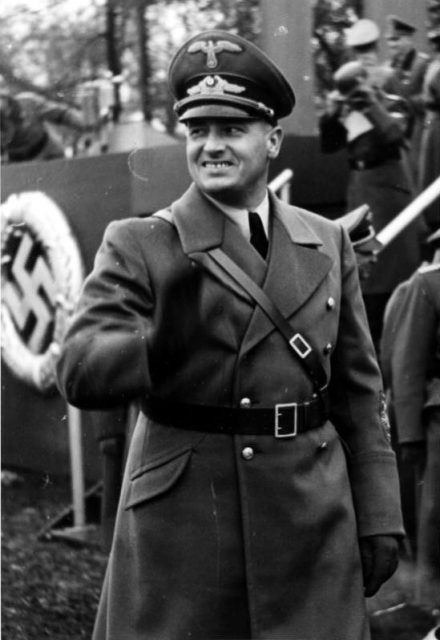
Meanwhile, Hubal and his Polish soldiers manned their battle stations and waited for the Germans. They were well covered and started shooting at the enemy when they were only about 200 feet away from the Polish positions. This caused a temporary panic in the German lines. However, the Germans stood their ground and the battle raged. The Germans stormed both Polish flanks, but they couldn’t break through their defenses.
In the meantime, Hubal told his men to stay in their positions and not to perform any offensive actions. He still waited for a report from a patrol that had been sent to check if there were any enemy units approaching from the south.
The patrol was successful and didn’t spot any enemies. After receiving that report, Hubal decided to counter-attack. He ordered 3 cavalrymen to go around the enemy lines and attack the Germans from the rear. Meanwhile, another patrol reported that there was a poorly guarded column of German vehicles behind the enemy lines. Hubal ordered Sergeant Alicki to take a few cavalrymen and attack this column.
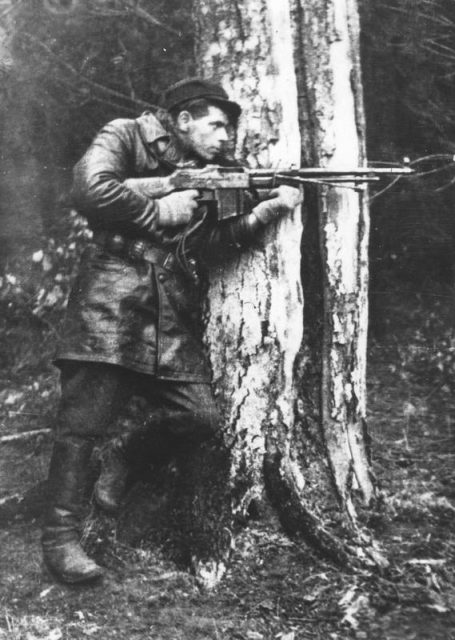
These two Polish units went around the German positions completely unnoticed and attacked from the rear. When Hubal heard sounds of gunfight coming from behind enemy lines, he led a general charge on the enemy positions.
The Germans were terrified; they panicked and ran away. After 2 hours of fighting, the battle ended with a total Polish victory. About 100 Germans had been killed and wounded. Moreover, 6 German vehicles had been destroyed. On the other side, 11 Polish soldiers were dead and 10 were wounded.
Despite winning the engagement Hubal knew his unit faced a much stronger enemy and they were surrounded. Therefore, Hubal ordered his men to perform a breakout maneuver. Just two days after the battle of Hucisk, the Germans found Hubal again and attacked for the second time. Yet again the Poles were victorious. However, 6 more Polish soldiers were killed and 2 wounded.
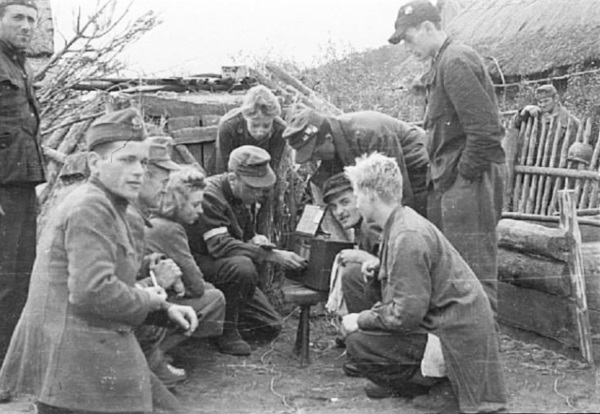
In only a few days of fighting, Hubal’s unit had lost almost 30% of its men. Considering their situation, Hubal decided to split his forces into infantry and cavalry. Each group was ordered to break out of the siege on their own. Hubal led the cavalry.
The cavalry succeeded after a few days and broke out of the siege. The infantry managed to escape the German pursuit as well but were unable to meet Hubal’s cavalry in the designated place. The infantrymen then disbanded their unit and hid in nearby villages.
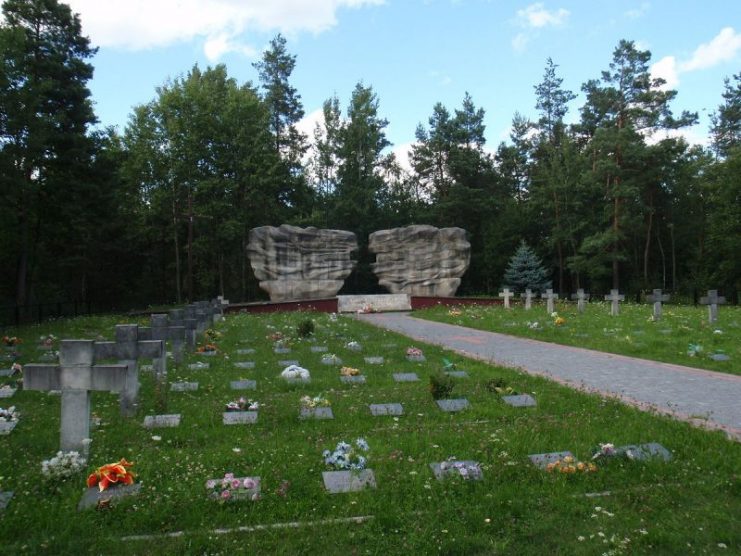
Final Days
The Germans decided to punish the people that had been assisting Hubal and his partisans. In the aftermath, 31 villages were burned and 711 civilians were killed.
On 29th April 1940, Hubal’s unit stopped for a night in a copse near Anielin village. By that time his unit was only about 20 men strong. The Germans knew Hubal’s location – probably thanks to one of the local residents. At dawn on the 30th of April, when most of the soldiers were sleeping, the Germans launched an attack. The Polish soldiers stood their ground and eventually were able to flee. However, 2 Poles died – one of them was Major Henryk “Hubal” Dobrzański.
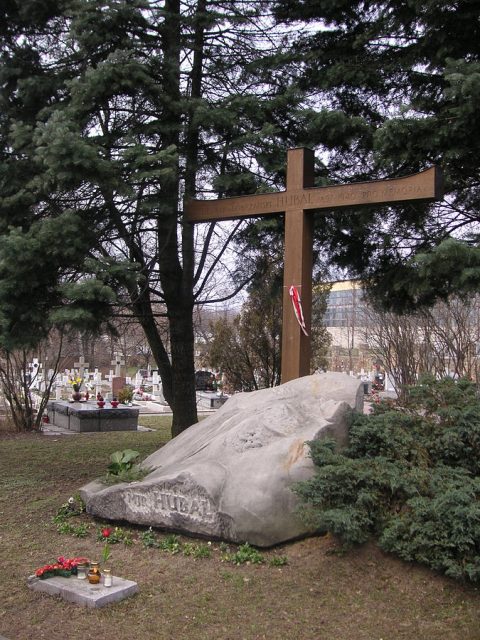
Hubal’s Legacy
This was the end of the first Polish partisan. After the battle, the Germans posed alongside Hubal’s body. Then they took the body to the local Wehrmacht headquarters. Today, 78 years after Hubal’s death, the location of his grave is still unknown.
Even after his death, the Germans still feared “Der Tolle Major” – mainly because of the impact that his grave could have on the Poles. However, they couldn’t kill his legacy. Hubal trained many good soldiers, who – after his death – served in the Polish resistance and fought against both the Germans and the Soviets.
Hubal’s legend lives on today with many Polish schools, streets, and parks named after him. He is considered one of the finest Polish soldiers to have sacrificed his own life for Polish freedom.
